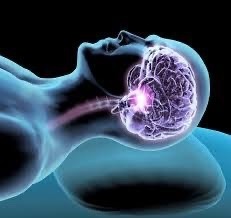Posted by Sarah Willis, PHD , NTS Nordic Team Solutions on Sep 26th 2024
Sleep Physiology, Why is Sleep So Special?
Why is sleep so special?
Sleep is fundamental to our well-being; we need it for daily function as it is vital for our physical and mental development. Furthermore, sleep restores our body to function and homeostasis (a time where we have lower energy expenditure).
Next, we will learn about sleep architecture, which includes multiple sleep cycles each night (70-120min). There are 2 types of sleep, non-rapid eye-movement (NREM) and rapid eye-movement (REM), where we alternate between these 2 types during our periods of sleep. NREM or stage 1, duration typically 1-5min where we are easily interrupted by disruptive noises. NREM or stage 2 (usually 10-25min initially and lengthening each cycle) and requires more stimulus to awaken us than stage 1. NREM or stage 3 (a.k.a., slow-wave sleep/delta sleep/deep sleep), we spend only a few minutes here, while in route to NREM stage 4 (same as stage 3) with duration typically 20-40 min, known as the hardest of all NREM stages to awaken. Followed by REM or stage 5 with the initial cycle lasting 1-5min with progressively longer durations with each episode of sleep, lengthening to 10-60min with dreams occurring most often here, and an important stage for memory consolidation. Overall, NREM is about 75-80% of the total time of sleep, while REM is about 20-25% of total time of sleep. The first NREM-REM cycle is generally 70-100min, then gradually longer with each cycle, with the longest REM in the last 1/3 of our sleep episode.
NREM – In comparison to while awake, we have a decrease in many functions including brain activity, heart rate, blood pressure, sympathetic nerve activity, blood flow to the brain, respiration, body temperature. We have similar muscle tone to wakefulness as well as increased airway resistance compared to wakefulness.
Sleeping is a passive process (without action from us), but that creates a challenge to our respiratory system for adequate and proper ventilation (to bring oxygen in). Our respiration becomes increasingly faster with erratic ventilation and flow rates during sleep. This is related to hypoventilation due to decreased muscle tone (especially during REM sleep), reducing the rib cage movement and increasing the upper airway resistance due to loss of tone of intercostal and upper airway muscles (muscles of rib cage). So, we know that sleep is crucial, but how does our body regulate sleep? When/How does it know to sleep?

Let’s zoom in on body thermoregulation, as we said above that there is a decline in night body temperature. This is accompanied by decreased heat production and increased heat loss (which promotes sleep onset and maintenance). Body temperature gradually increases in the hours before waking as the brain signals to increase heat production and conservation to disrupt sleep and promote waking. Look at the image below to visualize this response.

The list begins with stress, caffeine, alcohol, hunger, frequent awakenings or arousals, cumulative fatigue, sleepiness, etc. I am sure you might be able to add others to your individual list. A lack of sleep can lead to negative health consequences, including cardiovascular problems, weakened immune system, higher risk of obesity and type II diabetes, impaired thinking and memory, mental health problems, and increased sleep apnea. Lack of sleep can also lead to increased risk involved in activities such as driving, mobility/locomotion, mood disturbance, motivation, decision-making, etc. It is valuable to monitor recovery by implementing multiple tools in the resources page including morning heart rate, hydration status, fatigue levels, etc. Sleep is a crucial part of our recovery, but it is often overlooked and undermined. I hope that after reading this article you can place a greater focus and eventual priority shift on sleep. We can train like the pros (which is amazing to dial in each part of our efforts), but our ‘off’ time should also be prioritized to allow proper recovery and get adequate sleep for supercompensation (allowing restoration and repair of body and mind).
We need recovery for facilitating the training adaptations we work so hard to achieve. Let’s not miss out on a new secret weapon of prioritizing sleep; watch your body’s function and your performance thrive. (Personal tips: even little naps of 20-30 minutes are powerful, let your body relax and focus on your breath, you will fall asleep and gain benefits meanwhile)

